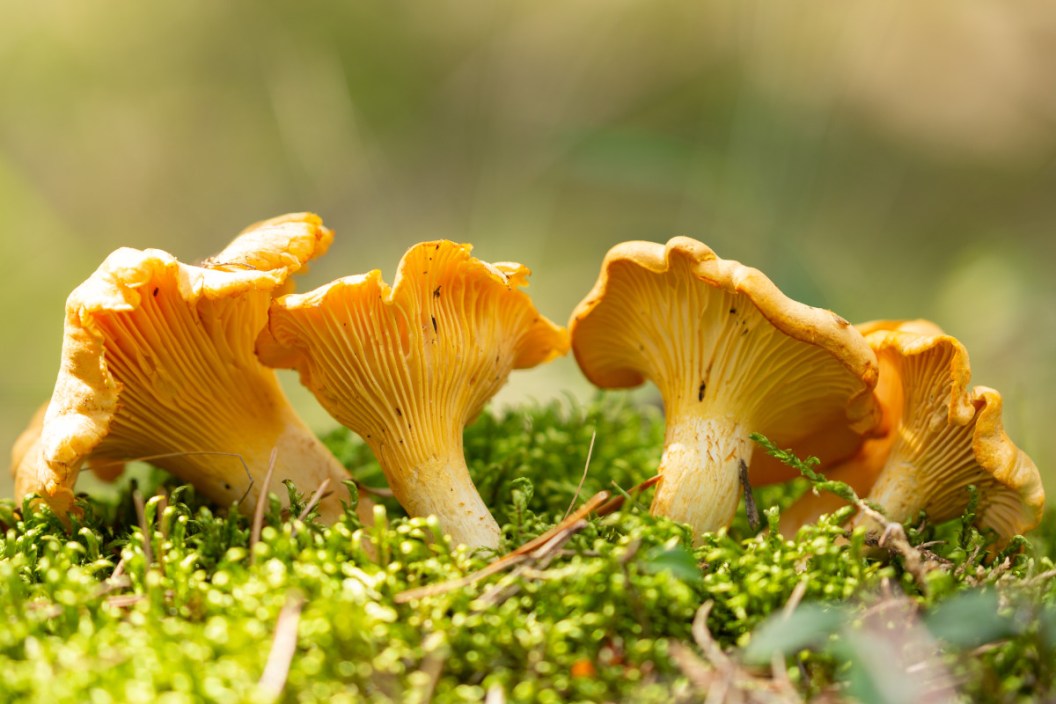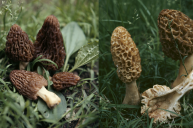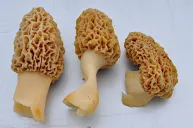Whether you're spending hours scouting for the fall, hiking new scenic trails, or specifically foraging for food, finding tasty mushrooms in the woods is always a treat. Most people immediately think of morels and chicken of the woods when someone mentions edibles you can find in the forest. Both of those are great, but one that flies under the radar a bit is the chanterelle. They are some of the best-tasting wild mushrooms you can find growing in the forest. But before you start searching for anything that looks like a little yellow trumpet, be sure you're picking the real deal and know how to prepare these edible fungi. Don't worry, we'll explain how to spot a true chanterelle, and where you can find some of this delicious wild food during your trips into the wild this season.
How to Identify Chanterelles
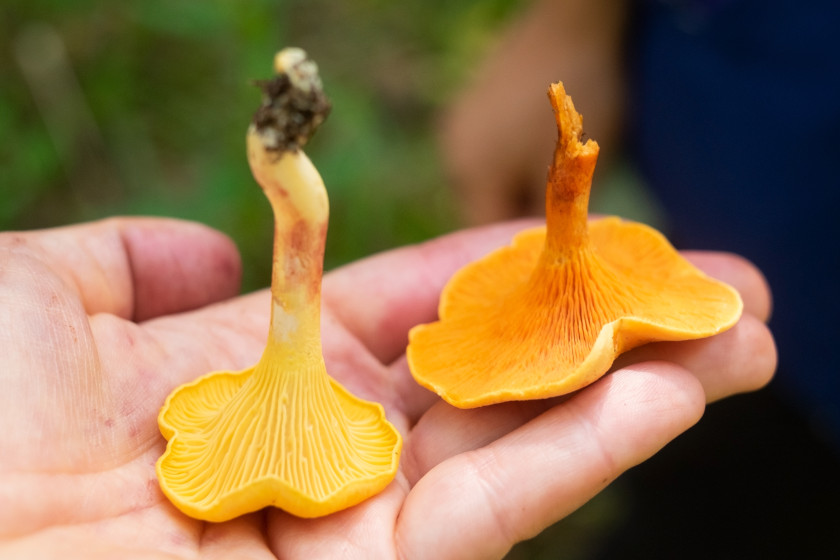
True Chanterelle on the left, False Chanterelle on the right, via Getty Images: Kolodun
Golden chanterelles are typically pretty easy to spot because of their bold color, but they can blend in with fall foliage later in the year and become tough to find. While they're usually a bright yellow-orange, chanterelles can fall anywhere on the color spectrum from a creamy white to true orange depending on the subspecies. The cap is shaped like a trumpet or funnel, and the edges can curl as the chanterelles age. It runs straight into the stem, which is usually slightly lighter in color at the base. Chanterelles don't have true gills on the underside of the cap like many mushrooms, but blunt ridges that fork and run down the length of the stem.
On average they are three or four inches tall. Chanterelles can grow as singles or in groups with a wide range in sizes. When you pick one up, the flesh will feel firm and have a sweet and fruity smell like apricots. The inside will be pure white when you cut it open. Chanterelles can be relatively easy to identify with research and practice, but it's smart to consult a photo guide and avoid poisonous mushroom varieties.
Some common chanterelle lookalikes that can be potentially dangerous include:
- False chanterelles: These similarly sized mushrooms do have true gills, sport more of an umbrella shape, and feel velvety on the cap. The caps of the false variety are also often more rounded when they are younger, and the cap is usually darker. It can be easy mix them up because they often have an orange color too. They're often found on rotted wood. False chanterelles not only don't taste great, but they can also cause gastrointestinal issues as well as hallucinations.
- Eastern jack-o-lanterns: Typically orange, eastern jack-o-lanterns have a thicker stem at the top, true gills with minimal forking. The biggest giveaway is the interior is also orange. Like false chanterelles, they often grow on decaying wood, many times in clusters. They get their name from their gills which sometimes glow in the dark. Eating these toxic mushrooms usually isn't fatal, but the stomach pain and vomiting they cause is intense.
The good news is, those two are the only ones you need to be concerned about. We recommend cutting every mushroom open to confirm that pure white color before you cook it, just to be on the safe side.
Types of Chanterelles
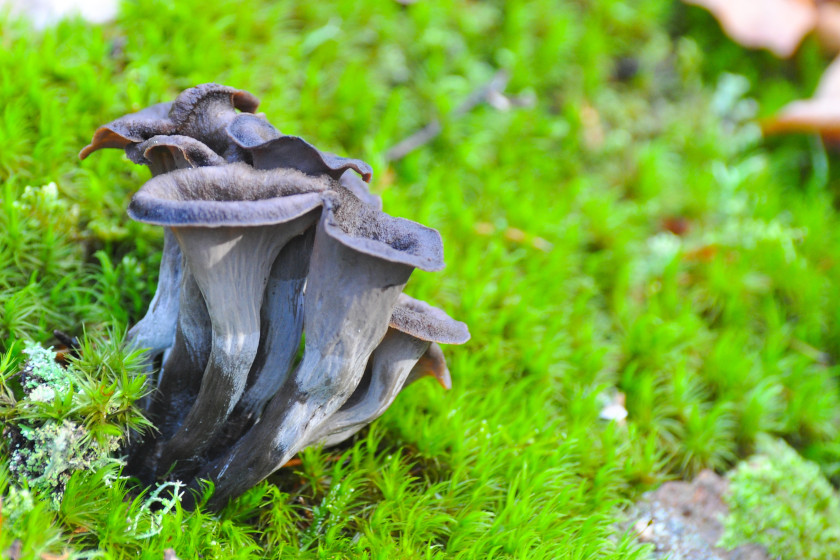
Getty Images: IvanMarjanovic
While most outdoorsmen and women are familiar with golden chanterelles, dozens of varieties of these wild edible mushrooms grow throughout North America. A few other common varieties that are safe to eat include:
- Black trumpets: Don't let the nickname "horn of death" fool you, these mushrooms are safe and delicious to eat. They may look inedible due to their dark gray to black coloration but they're quite tasty. The nice thing about black trumpets is there are no lookalikes to worry about.
- Cinnabar red chanterelles: These typically are tiny and brightly red colored. These chanterelles often grow in groups. The downside is they require quite a few to make a meal.
- White chanterelles: Off-white and fragile, these mushrooms can grow to decent sizes. The downside is they rarely grow in large numbers, which means you'll need to burn the boot leather to find them.
Some areas may hold many different species of chanterelles while others may be home to one specific variety. The only way to find out what is most common in your area is to get out there and see what's growing.
Where and When to Find Chanterelles
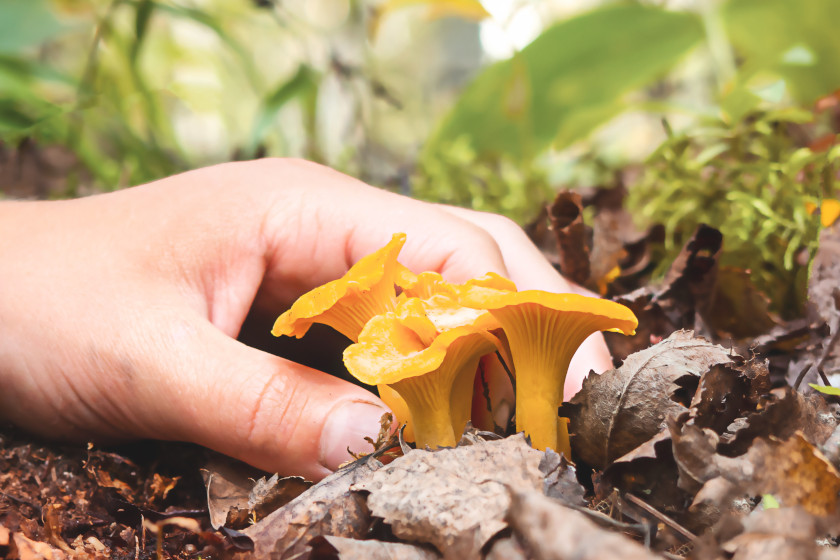
Getty Images: Natalya Maisheva
Generally growing between July through October, chanterelles love hot, humid weather and spring up at slightly different times depending on location and climate. In humid regions with significant summer rainfall — such as the eastern United States up through New England — you can often find chanterelles throughout the summer. But in the western United States where summers are often dry, chanterelles won't appear until September or October when fall rain begins.
Chanterelles are mycorrhizal, meaning they grow along tree roots to get nutrients. They're most often found on hardwood forest floors near water sources, but they grow near conifers as well. The best time to head out hunting them is after a heavy rain. And if you find one, you'll likely find a few more nearby.
Watch out for chanterelles that have been chewed up by bugs. You can cut the mushroom off at the base or pluck it from the ground. Just be sure to leave a few in the dirt so they can continue to propagate the area. Take note of where you find them because they will often pop up again in the same place at the same time the next year. Many chanterelle hunters keep their best hot spots a closely guarded secret for this reason.
How to Prep and Cook Chanterelles
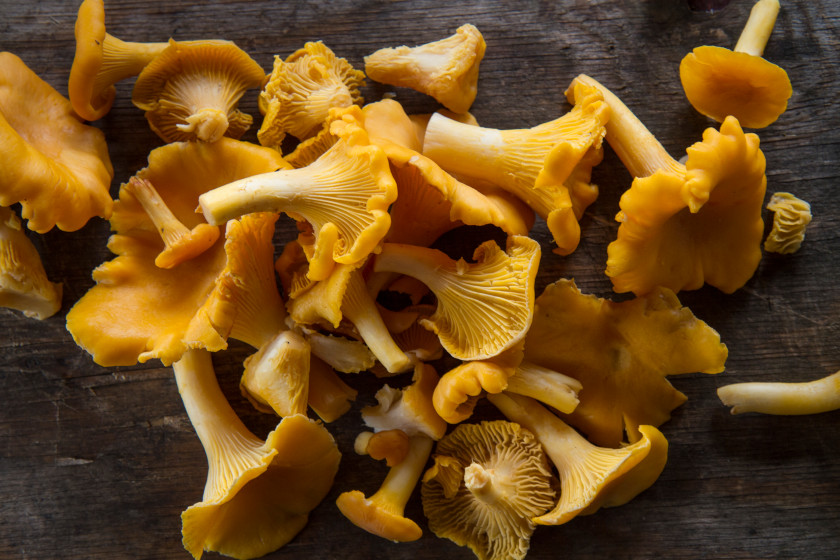
Getty Images: Eetum
Like many mushrooms, chanterelles are made up mostly of water, but they contain several healthful vitamins and minerals and could even provide some anti-inflammatory health benefits. When you bring your harvest home, be sure to give them a good cleaning to remove dirt, sand, and bugs. Pay close attention to the false gills, as they are narrow spots that can hold a lot of dirt. Rather than soak them, brush them off under running water, then let them dry out on paper towels before cooking with them. They can last a couple days in the fridge, but it's best to use them at their freshest.
Most connoisseurs won't dry fresh chanterelles out completely because they can lose their flavor and take on a rubbery texture, but you can still preserve any mushrooms you won't immediately use by canning them. If you score some chanterelles this summer, try one of these delicious recipes that will make the mushrooms the star of any meal.
- Chanterelles on toast from New York Times Cooking
- Easy sautéed chanterelle mushrooms from Eat Simple Food
- Creamy chanterelle soup from Vegan on Board
- Chanterelle risotto from Hunter Angler Gardener Cook
- Chanterelle mushrooms with cream and parmesan from Momsdish
With a mild, nutty flavor, chanterelles are versatile and work best with simple preparations. They can make a perfect addition to your wild game feast if you want a fully self-sourced meal. Give hunting them a try this year, you may just have a new favorite summer activity.
